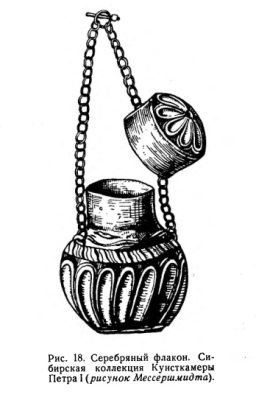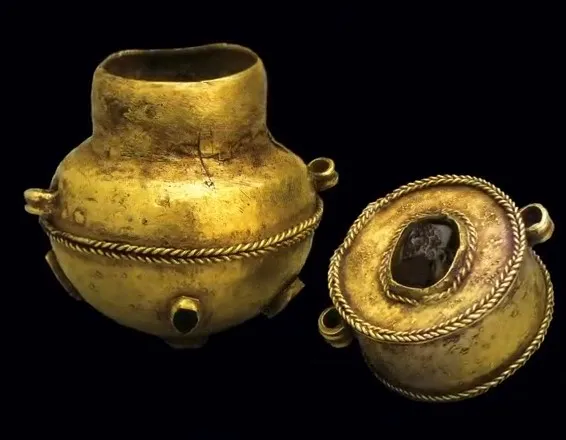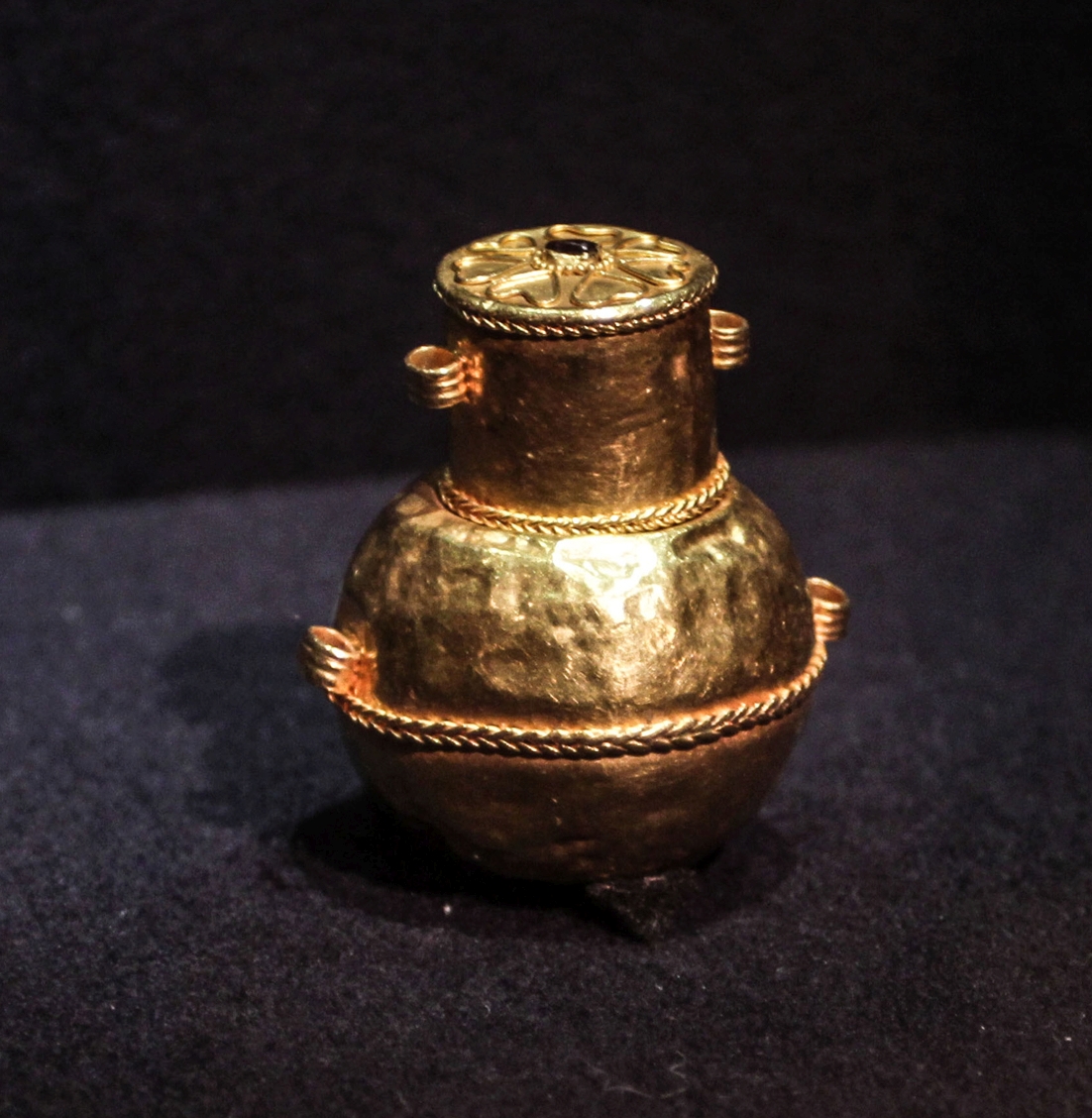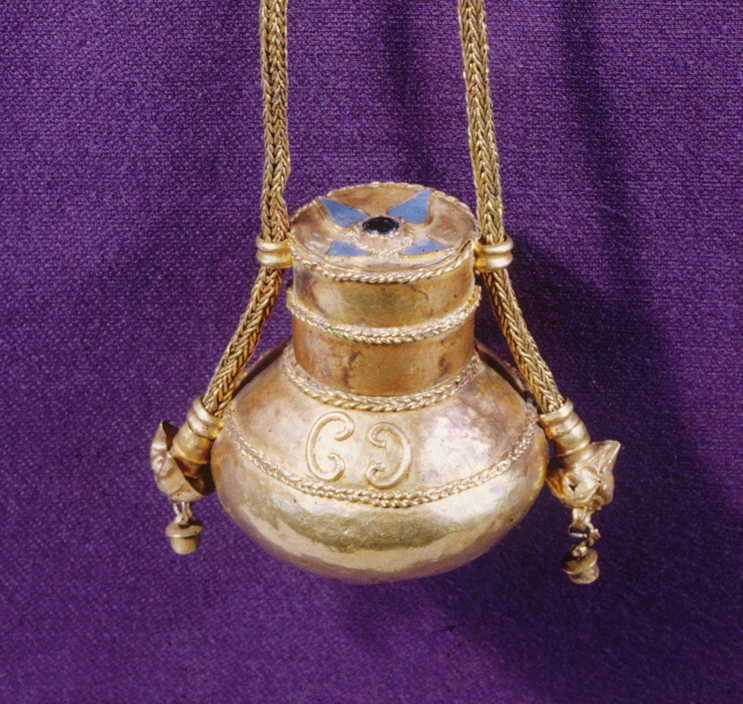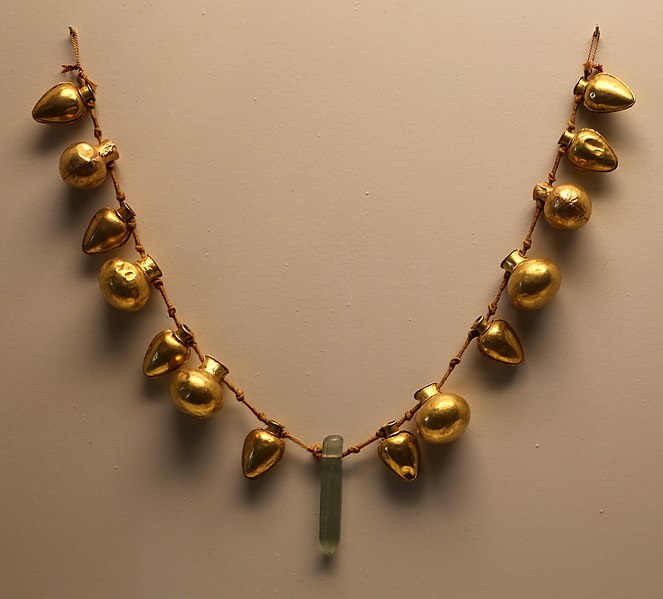Silver bottle, 4th-5th century.
Dimensions: height 5 cm, body diameter 4.9 cm.
Stored in the State Hermitage, inv. No. SI 1/246. [СИ 1/246]
“a silver bottle coming from the so-called Siberian collection of the Kunstkamera. The bottle was brought by Messerschmidt from Siberia.
The shape of this bottle does not differ significantly from the previous ones (Fig. 17, 1). The ears apparently disappeared in ancient times. At the place of their attachment, small indentations can be traced – two on the shoulders and one in the center of the lid. In ancient times, the ears were probably replaced by two wire loops passed through carelessly punched holes in the shoulders of the body of the bottle (see Fig. 17.2). In Messerschmidt’s original drawing the chain, now lost, is shown threaded through these wire loops rather than through the original lugs (Fig. 18).
The entire body, below its deflection, is decorated with flutes. On the hangers there is a floral ornament consisting of a branch with leaves extending from it in different directions. The gilding on the surface of the bottle is partially preserved. The lid is decorated with a ten-petalled rosette, giving the impression of a crude imitation of the rosette made of applied wire on the Novo-Petrovsky bottle. The bottle is forged from one sheet.
The throat is soldered and a cabbage soup can be traced along the inside. The relief ornament is knocked out from the inside. The floral ornament on the hangers is made of a chased linear pattern. This pattern is somewhat reminiscent of the leaf wreaths on Kerch silver bowls. Flutes on the body of the vessel are often found in works of ancient toreutics. The rosette on the bottom has an earlier analogy on the phaleras from a find in the Starobelsk region of the Kharkov region. In both cases, the ends of the petals of the rosette are bent, which is shown by two lines, but in general the rosette on the Siberian bottle is made much more primitive and crudely.
The Siberian bottle is associated with a circle of monuments of late antique art of the 4th–5th centuries CE and, undoubtedly, was brought to Siberia.”
Скалон К. М. О культурных связях Восточного Прикаспия в позднесарматское время // АСГЭ. – 1961. – Вып. 2. – С.114-140

